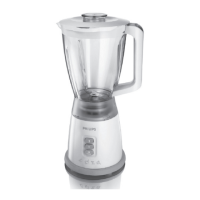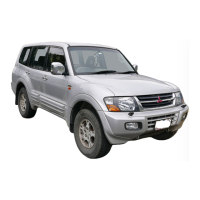O-26
Troubleshooting
Automatic transmission
Note: Due to the complexity of the automatic transmission, it> di~icult for
the home mechanic to properly diagnose and service. Forproblems other
than the following. the vehicle should be taken to a reputable mechanic.
47 Fluid leakage
1 Automatic transmission fluid is a deep red color, and fluid leaks
should not be confused with engine oil which can easily be blown by air
flow to the transmission.
2 To pinpoint a leak, first remove all built-up dirt and grime from the
transmission. Degreasing agents and/or steam cleaningwill achieve this.
With the undersideclean, drivethevehicleat lowspeedssotheairflowwill
not blow the leak far from its source. Raise the vehicle and determine
where the leak is located. Common areas of leakage are:
4
b)
4
4
e)
f )
Fluid pan: tighten mounting boltsandforreplacepan gasketas nec-
essary (Chapter 1). Some models have adrain plug; make sure it’s
tight.
Rear extension: tighten bolts and/or replace oil seal as necessary.
Filler pipe: replace the rubber oil seal where pipe enters transmis-
sion case.
Transmission oil lines: tighten fittings where lines enter transmis-
sion case and/or replace lines.
Vent pipe: transmission overfilled and/or water in fluid (see check-
ing procedures, Chapter 1).
Speedometer connector: replace the O-ring where speedometer
cable enters transmission case.
48 General shift mechanism problems
Chapter 7 deals with checking and adjusting the shift linkage on auto-
matic transmissions. Common problems which may be caused by out of
adjustment linkage are:
a) Engine starting in gears other than P (park) or N (Neutral).
b) Indicator pointing to a gear other than the one actually engaged.
c) Vehicle moves with transmission in P (Park) position.
49 Transmission will not downshift with the accelerator pedal
pressed to the floor
Chapter 7 deals with adjusting the TV linkage to enable the transmis-
sion to downshift properly.
50 Engine will start in gears other than Park or Neutral
Chapter 7 deals with adjusting the Neutral start switch installed on au-
tomatic transmissions.
51 Transmlssion slips, shifts rough, is noisy or has no drive in
forward or Reverse gears
I There are many probable causes for the above problems, but the
home mechanic should concern himself only with one possibility; fluid lev-
el.
2 Before taking the vehicle to a shop, check the fluid level and condition
as described in Chapter 1. Add fluid, if necessary, or change the fluid and
filter if needed. If problems persist, have a professional diagnose the
transmission.
Driveshaft
Note: Refer to Chapter 8, unless otherwise specified, for service informa-
tion.
52 Leaks at front of driveshaft
Defective transmission rear seal. See Chapter 7 for replacement pro-
ceduye. As this is done, check the splined yoke for burrs or roughness that
could damage the new seal. Remove burrs with a fine file or whetstone.
53 Knock or clunk when transmission Is under initial load
(just after transmission Is put into gear)
1 Loose or disconnected rear suspension components. Check all
mounting bolts and bushings (Chapters 7 and 10).
2 Loose driveshaft bolts. inspect all bolts and nuts and~tighten them se-
curely.
3 Worn or damaged unwersal joint bearings. Inspect the universal
joints (Chapter 8).
4 Worn sleeve yoke and mainshaft spline.
54 Metallic grating sound consistent with vehicle speed
Pronounced wear in the universal joint bearings. Replace U-joints or
driveshafts. as necessary.
55 Vibration
Note: Before blaming the driveshaft, make sure the tires areperfectly bal-
anced and perform the following test.
1 Install a tachometer inside the vehicle to monitor engine speed as the
vehicle is driven. Drive the vehicle and note the engine speed at which the
vibration (roughness) IS most pronounced. Now shift the transmission to a
different gear and bring the engine speed to the same point.
2 If the vibration occurs at the same engine speed (em) regardless.3
which gear the transmission is in, the driveshaft is NOT at fault since the
driveshaft speed varies.
3 If the vibration decreases or is eliminated when the transmission is in
a different gear at the same engine speed, refer to the following probable
causes.
4 Bent or dented driveshaft. Inspect and replace as necessary.
5 Undercoating or built-up dirt, etc. on the dhveshaft. Clean the shaft
thoroughly.
6 Worn universal joint bearings. Replace the U-joints or driveshaft as
necessary.
7 Driveshaft and/or companion flange out of balance. Check for miss-
ing weights on the shaft. Remove driveshaft and reinstall 180-degrees
from original position, then recheck. Have the driveshaft balanced if prob-
lem persists.
8 Loose driveshaft mounting bolts/nuts.
9 Defective center bearing, if so equipped.
10 Worn transmission rear bushing (Chapter 7).
56 Scraping noise
Make sure the dust cover on the sleeve yoke isn’t rubbing on the trans-
mission extension housing.

